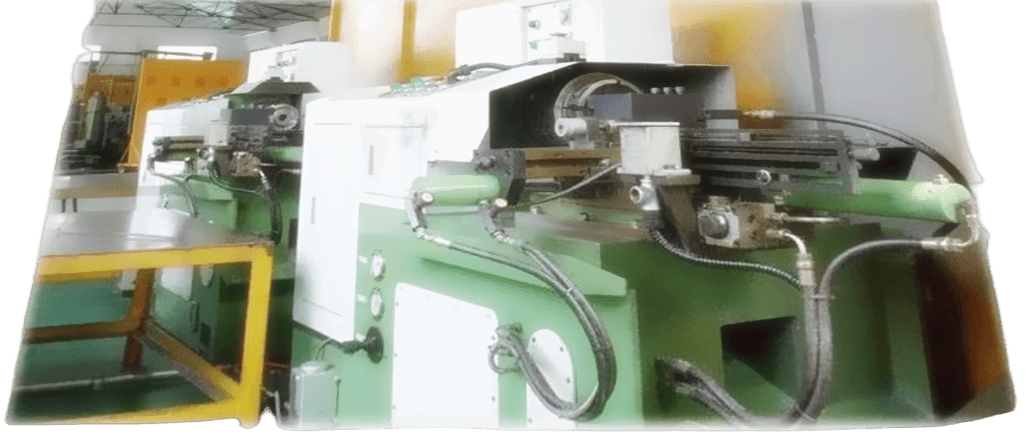
For the bearing position of the motor shaft, the shaft extension position, and the collector ring position of the winding rotor motor, most motor manufacturers use grinding processing, and the metal surface roughness after grinding is good, which can meet the needs of precision matching and other requirements of the motor performance.
Although the structure of mechanical parts is varied, it is composed of some basic geometric surfaces. The machining process of mechanical parts is obtaining these basic geometric surfaces on the parts. Different process systems complete each link of this process according to the requirements, and different parts are processed differently. We compare some characteristics of the process of turning and grinding.
Turning is one of the most widely used methods in machining, mainly used in machining rotating parts. The surface-forming movement of ordinary cylindrical turning is composed of two movements: one is the rotating movement of the work-piece, which is the basic movement of cutting off excess metal to form a new surface of the work-piece; The second is the longitudinal movement of the turning tool, which ensures the continuous turning. According to the different turning actions, the rotating movement of the work-piece is called the main movement of turning, and the movement of the tool is the feed movement.
Grinding refers to machining the work piece's surface at a high linear speed using a tool with a hard abrasive particle on the surface. Grinding is a very widely used method in mechanical manufacturing, its processing accuracy is high, and it has a wide range of adaptability to various processing materials and geometric surfaces. It can process general metal materials and non-metallic materials and a variety of high-strength and difficult-to-cut materials.

The machining process of CNC lathes is similar to that of ordinary lathes. Nevertheless, the following aspects should be noted: CNC lathing is a clamping, continuous automatic machining to complete all turning processes.
When turning rough, choosing a tool with high strength and good durability is necessary to meet the requirements of large back cutting and large feed amount when turning rough. When finishing, users need to choose a tool with good precision and durability to ensure processing accuracy. If reducing the tool change time and facilitating tool matching, the machine clamp knife and the machine clamp blade should be used as much as possible.
Try to use a general fixture to clamp the work-piece. Avoid using special fixtures; Part positioning reference coincides with reducing positioning errors.
The machining route is the movement path and the direction of the tool relative to the part during the processing of the exponential control machine tool. It should be able to ensure the processing accuracy and surface roughness requirements, Shorten the machining route as much as possible and reduce the idle travel time of the tool.
The three major elements for high-efficiency metal cutting include machining material, cutting tools, and cutting conditions. These determine the machining time, tool life, and machining quality. An economical and effective machining method is a reasonable choice of cutting conditions.
Under the condition that the CNC lathe has not yet reached popular use, the excess margin on the blank should generally be arranged on the ordinary lathe processing, especially the margin containing the forging and casting hard skin.
In the cutting process, how can we process the desired work-piece quickly and ensure that the tool life and processing accuracy are not damaged? At this time, we need to consider the material of the work-piece, hardness fully, and the performance of the machine tool, select the right tool and use high-efficiency cutting conditions. That is, what we usually call the three elements of cutting:
Cutting speed (VC), spindle speed, and work-piece diameter determine the cutting speed
The amount of feed (fn) refers to the amount of tool movement per rotation of the work-piece
Depth of cut (ap), also known as unilateral margin. That is the difference between the unmachined surface and the machined surface.
They can directly cause damage to the tool. With the increased cutting speed, the temperature of the tooltip will rise, resulting in mechanical, chemical, and thermal wear. Increase the cutting speed by 20%, and reduce the tool life by 1/2. The relationship is produced in a very small range between the feed conditions and the wear behind the tool. However, the feed amount is large, the cutting temperature rises, and Rear wheel wear is high. It has less effect on the tool than the cutting speed. Although the effect of the cutting depth on the tool is not as large as the cutting speed and feed, in micro-deep cutting, the hardened layer of the material being cut can also affect the tool's life.
The user should choose the cutting speed according to the material to be processed, hardness, cutting state, material type, feed speed, cutting depth, etc. Select the most suitable processing conditions according to these factors. Regular, steady wear up to life is ideal. However, in actual operation, the choice of tool life is related to tool wear, processing size change, surface quality, cutting noise, processing heat, and others. In addition, it is necessary to conduct research according to the actual situation. Coolant or a rigid blade can be selected for difficult materials such as stainless steel and heat-resistant alloys.
Contact: Nina Qiao
Phone: 86-13526572721
E-mail: cutting@zy-superhardtools.com
Whatsapp:86-13526572721
Add: AUX Industry,Zhengzhou City,Henan Province,China
We chat
